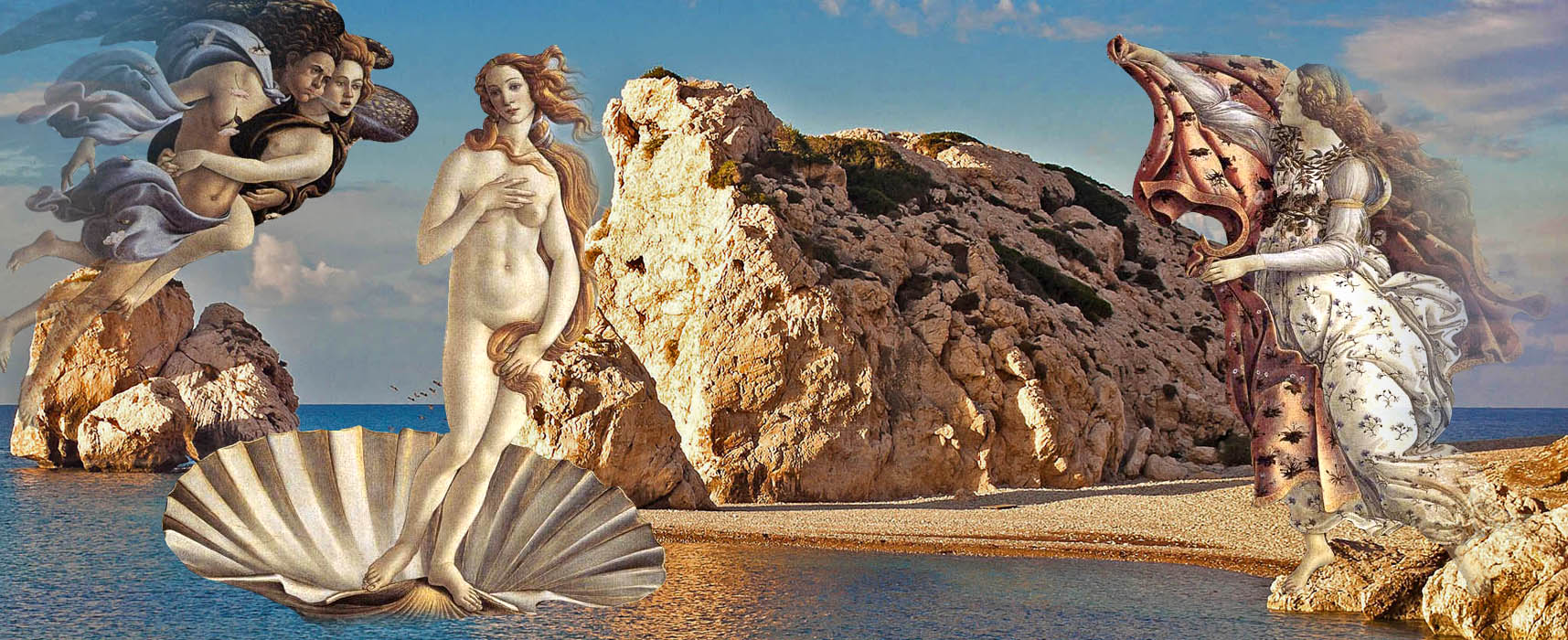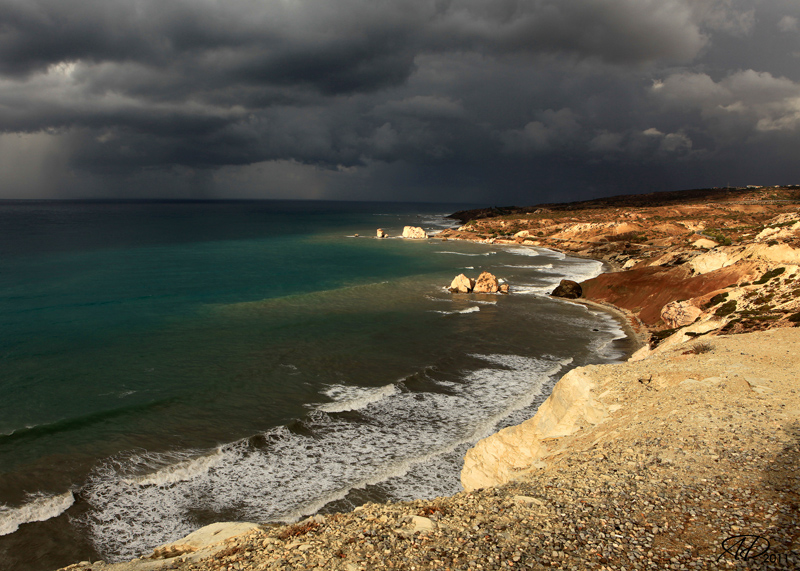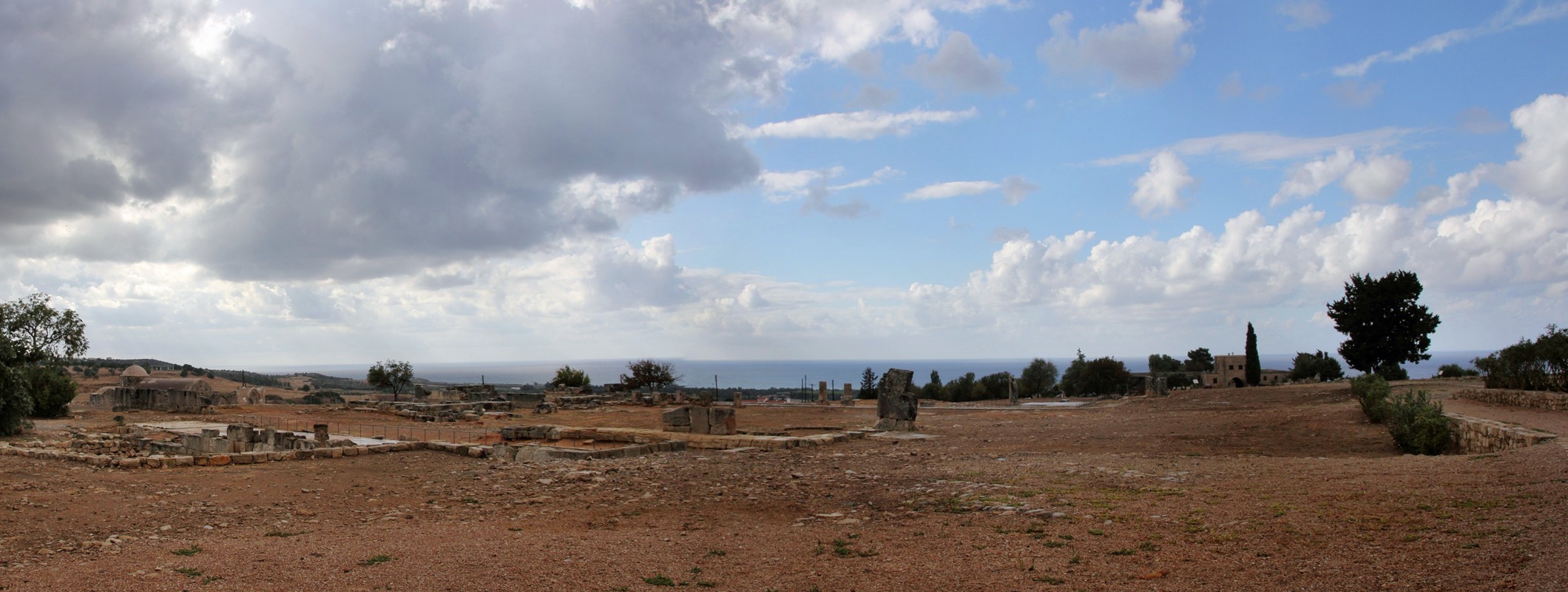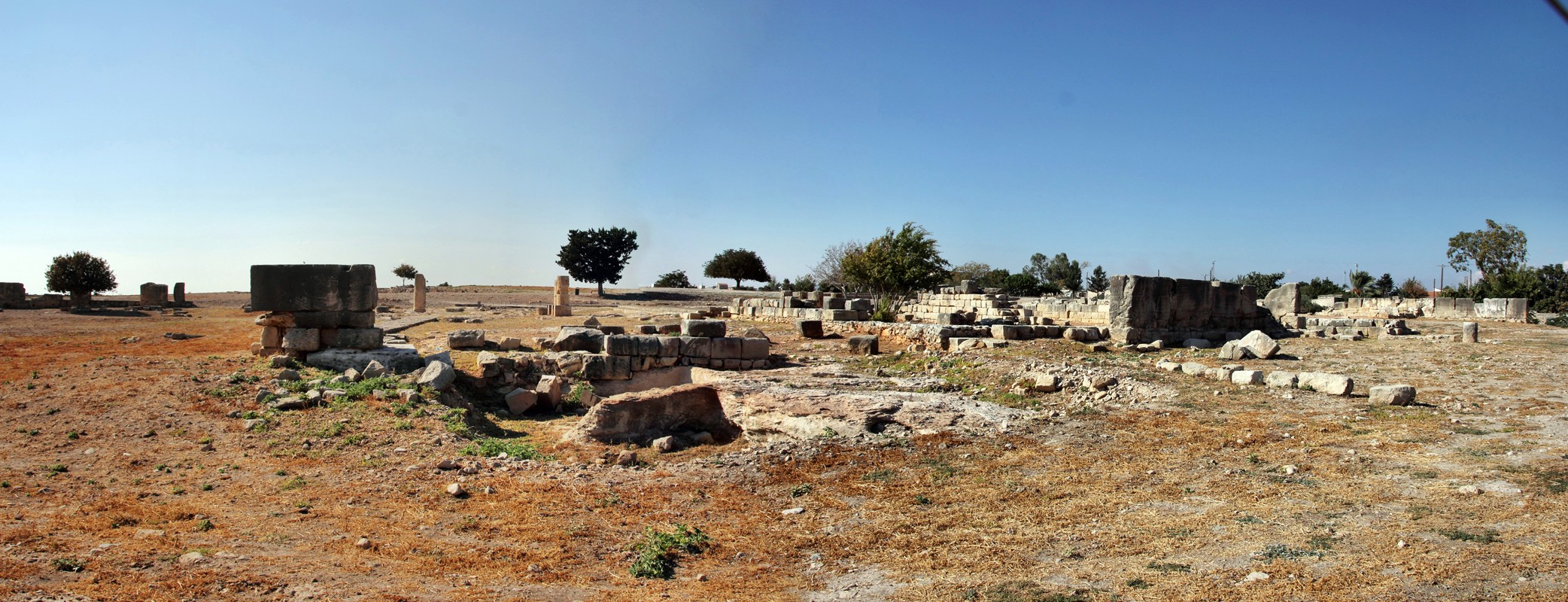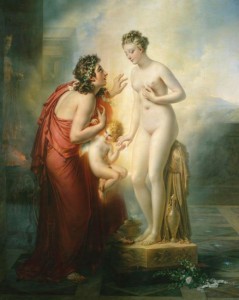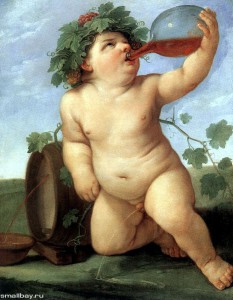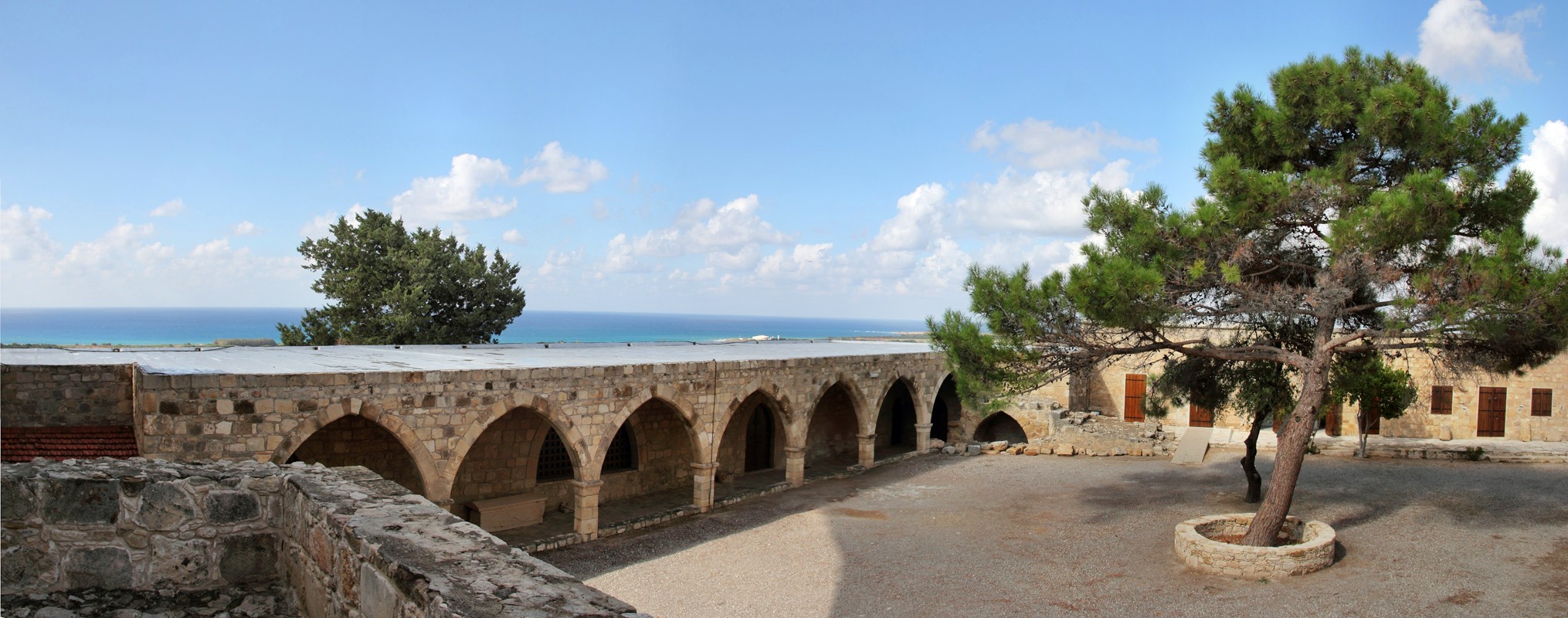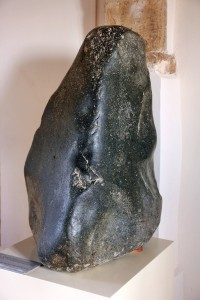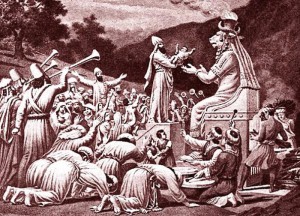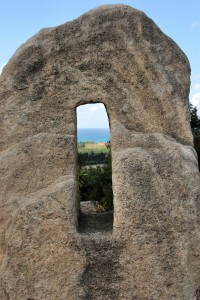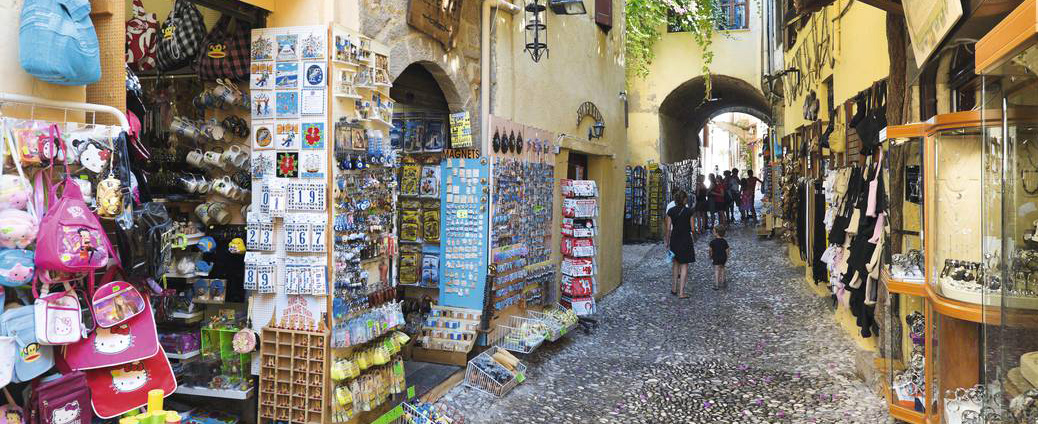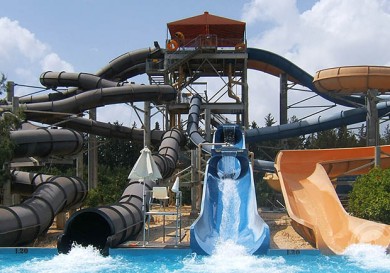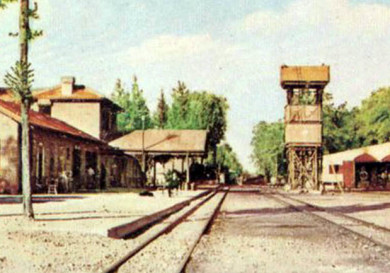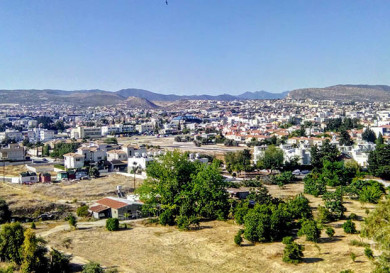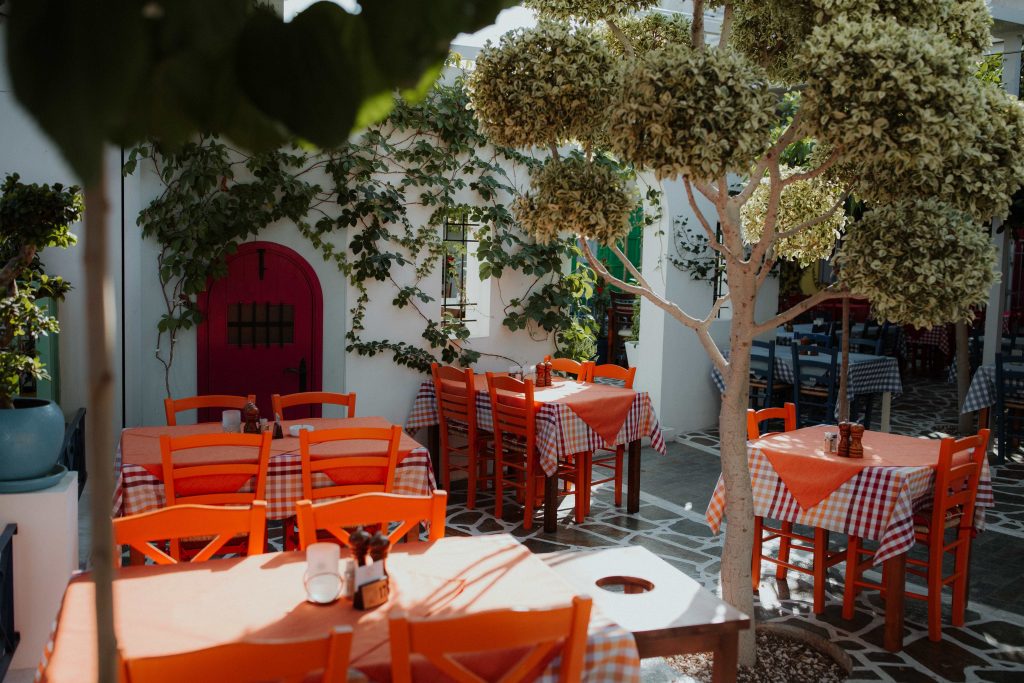The battle for men’s souls, the battlefield of which is the human heart, continues. Day after day tourist buses and rental cars come to the world famous stones in Petra Tou Romiou, and the nearby village of Kuklia.
Just a few kilometers separate the magical place where, according to legend, Aphrodite floated on a half shell, and the centre of the ancient Palaepaphos city. Here is a place where myth and history magically touch. It was home to the most famous of the Mediterranean temples dedicated to Aphrodite.
Nearby stands the oldest Orthodox church of Panagia Catholics, dedicated to the Mother of God. Here is the evidence of the confrontation between good and evil, light and darkness, a struggle that concerns us all.
Petra Tou Romiou
Meaning «Roman Stone». It’s one of the most beautiful places on earth (point B on the map). The great artist, using thin brush strokes, depicts the magical sunrises, spectacular sunsets and three stones on a heavenly sea background.
According to ancient legend, the mighty giant warrior, Digenes Akrit, protecting the island from enemy attacks from the sea, hurled a huge stone and sank the enemy ship. This stone remained on the seashore. Another legend claims that it was here that Aphrodite set foot, a goddess born from the sea.
There are many romantic associations, but the romance ends as soon as you begin to read the Greek myths telling the story of the goddess’ birth which involve a Cyclops and the mother getting the son to cut off his father’s genitals.
Instead of loving God the Father who gave his son to save the people, there are cruel gods who fought and squabbled with each other.
What is the reason? Let’s discuss this later, but for now climb away from the beach where the ancient city of Palaepaphos was once located, and today there is the village of Kouklia (point C on the map).
Kouklia
In the village centre, clearly signposted, is the entrance to the open air museum. Ticket price €3.40 (Monday – Sunday. 8:30 – 17:00).
In ancient times the Greeks were very well versed in the arts and appreciated beauty. The chosen place is ideal, with a smooth, flat hill top, offering wonderful views of the sea and surroundings. Even today this view is breathtaking and is not spoilt by the modern villas or large windmills.
At the centre of the ancient city was a temple of the goddess Aphrodite. The area was enclosed on all four sides by a high wall built of hewn stone. To the left of the centre track can be seen the remains of this imposing structure.
The temple was first mentioned in the 12th century B.C. Several well known myths are associated with the place.
Pygmalion was a sculptor who was so disgusted by the local prostitutes that he decided to live his life unmarried. However, he then carved a statue out of ivory, which was so realistic and beautiful that he fell deeply in love with it, and so when the festival came around he prayed to Aphrodite that the statue would come alive. Aphrodite, the goddess of love, took pity on Pygmalion and granted his wish. He married the statue, which he called Galatea. There are many versions but one is they had a son called Paphos, from whom the city in Cyprus, sacred to Aphrodite, received its name, and a daughter called Metharme.
Kinyras marries Metharme, daughter of Pygmalion, high priestess of Aphrodite, and becomes King of Palaepaphos. Kinyras erects a temple of Aphrodite and becomes both the King and high priest of the cult of Aphrodite. Palaepaphos becomes the capital of Cyprus and one of the religious centres in the Mediterranean.
To the right of the track you can see the foundation of the priest’s house from the 1st century.
The Aphrodite’s cult
For Kinyras the cult of Aphrodite became a convenient means of concentrating his power. But where did the pagan cults originate and what drives people to worship the pagan gods?
If we look at the most famous objects of worship, we can see an interesting pattern – all are based on certain human passions.
Dionysus and Bacchus were linked to wine and the drinking man. Aphrodite is primarily associated with selfish sexual desire and lust. I note that the Christian tradition, on the contrary, seeks to free man of sin, and he is called on to work ridding himself of desires with fasting, prayer and repentance. Here we see a clear contrast between the two religious traditions of paganism and Christianity. It’s no coincidence then that we’re going to talk about the reasons.
Deity symbols
We travel further to the entrance to the medieval manor from the Lusignan era. It’s a complex of buildings with a large central courtyard.
One of the main exhibition items located in the castle is an idol, made from grey-green volcanic stone, 122 cm high. This is Aphrodite, the symbol of the deity worshipped by the people.
Standing in front of this not very appealing object, I wondered whether it was just the indulging of passions that made people bring gifts to it.
Aphrodite loved incense, sweets, honey and fruit, and rejected blood sacrifices, unlike other gods. Archaeologists carefully examined the temples of Baal and Moloch, terrible gods for which people arranged orgies and carried out human sacrifices, including their own children.
This is evidenced by the remains of children, carrying petitions written by their parents. The life of your child is a terrible price to pay for such things as wealth or position in society.
Again I compare paganism and Christianity. God, the Father, sacrificed His son for the sake of people. The pagan gods demand people sacrifice their own children, get drunk, are corrupt and destroy families.
Pagan or Christian?
Standing here on a beautiful hill, it’s easy to draw parallels between today and the events of a thousand years ago. Yes, the Aphrodite’s temple was destroyed, not just by a powerful earthquake, it’s as if the heavens could not tolerate this abomination on earth, but people rebuilt the shrine over and over again until the 4th century. The Emperor Theodosius the Great did not forbid the cult of Aphrodite.
What exactly has changed?
Paganism, at first glance, is a very tolerant religious outlook.
Pagans respect all other gods and were happy to worship the gods of the country or city where they were. Pagans understand that a quiet life is possible when the vengeful gods are placated, and so each guest must bow to the god of the house. A refusal was often punished by death, and many Christians died because they were unwilling to worship none but the true God.
This pagan tolerance / intolerance manifests itself today in various social situations. For example, a tourist that bows at an Orthodox shrine and then at Aphrodite’s is no different from the pagan who lived many centuries ago. The priestesses of Aphrodite are still abundantly available in certain parts of the world.
So, is it a sin for those who visit Petra Tou Romiou, or enter the museum in Palaepaphos? Of course not; the sin lies in our hearts, our thoughts, desires and aspirations.
In conclusion
I love to visit Aphrodite’s stone. It’s a surprisingly beautiful place, and we love to walk there sometimes with the children. But I never associate it with the opportunity to attain some of Aphrodite’s youth or beauty. Do we want miracles? Miracles are made at the point of contact between the spiritual and material worlds.
And in the spiritual world, as well as the material one, there are both good and evil.
God and the devil – two opposite types of spiritual beings, are the foundation of the two opposing religious faiths – Christianity and paganism.
And in this small village, Kouklia demonstrates their closeness in our daily lives: the temple of Panagia Catholics and the ruins of the ancient temples of Aphrodite, still attract the attention of people who decide to whom they will give their hearts.




